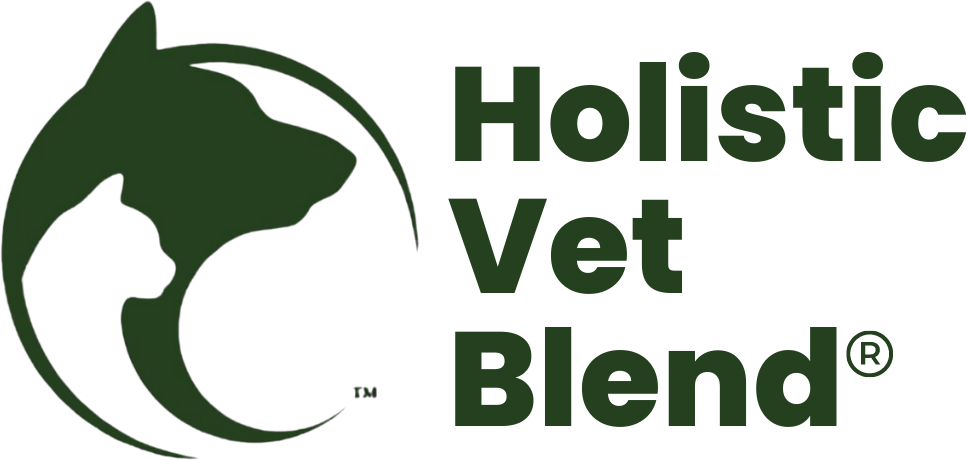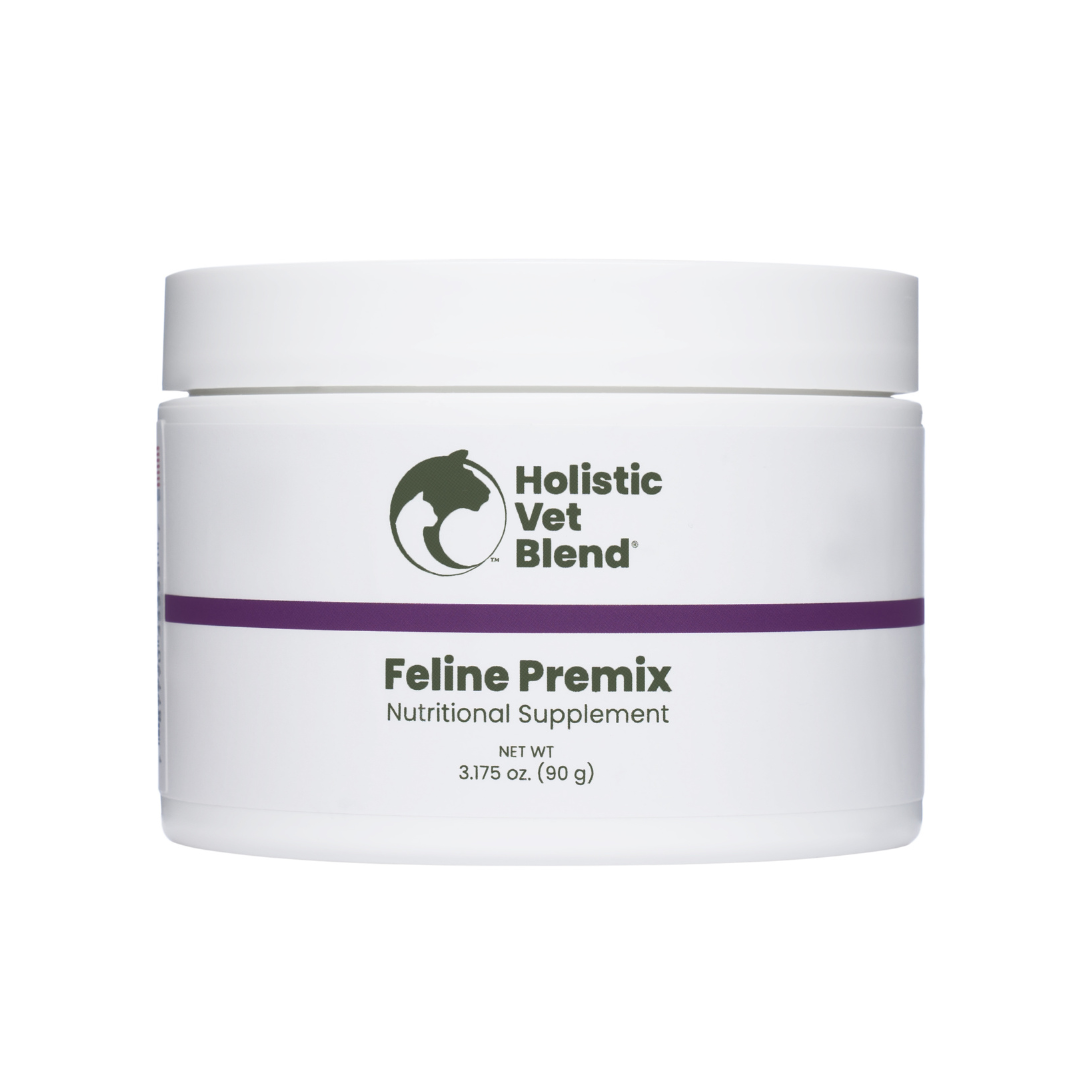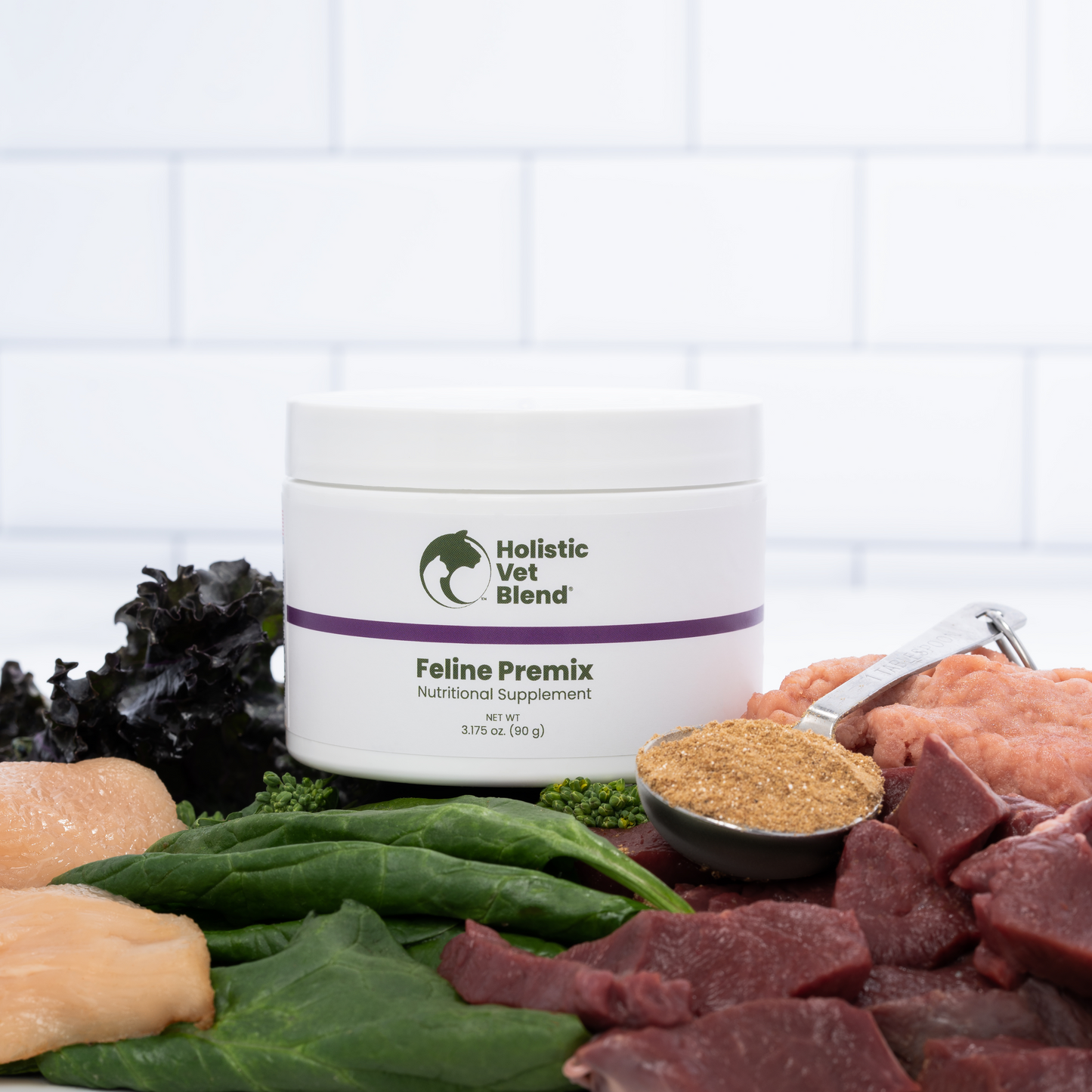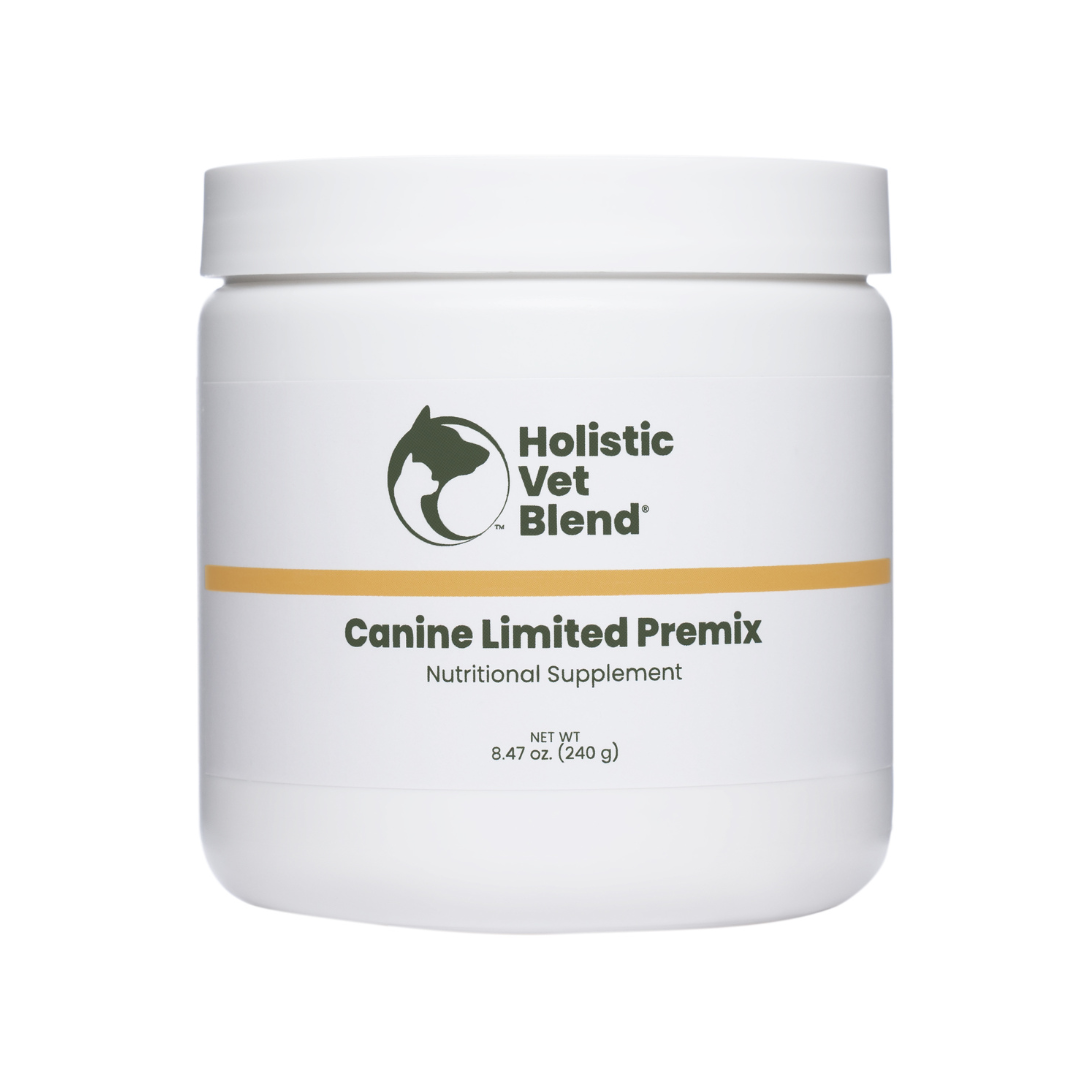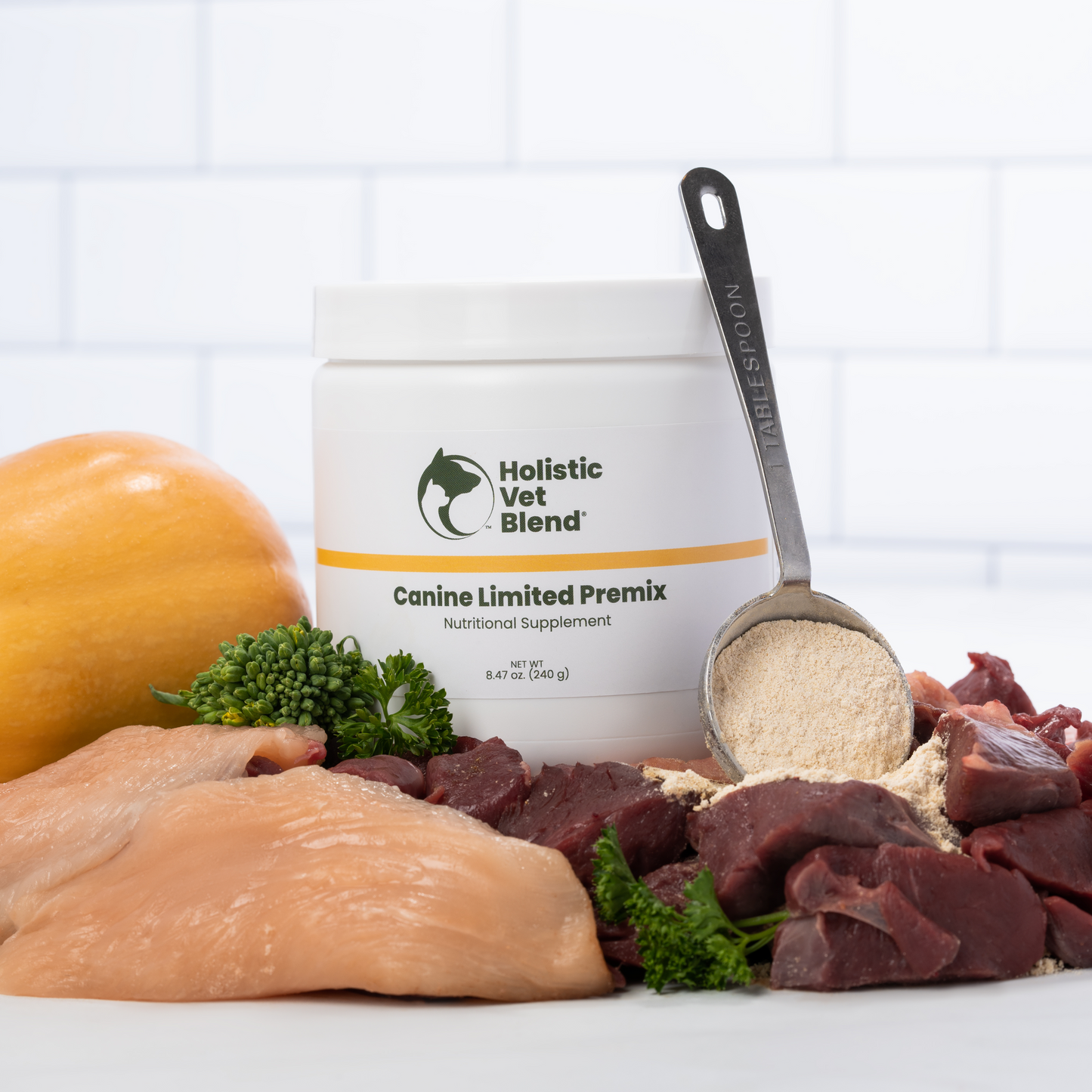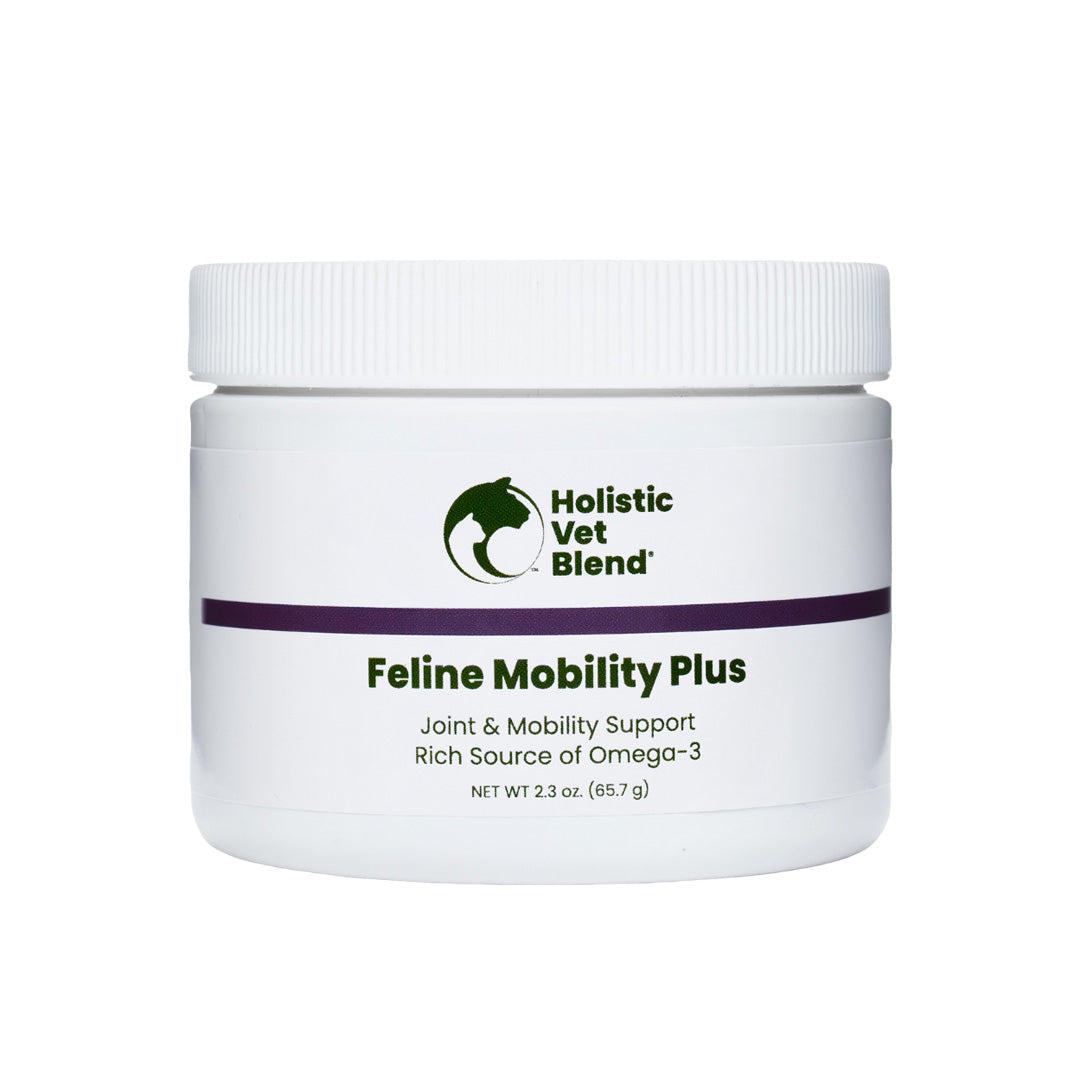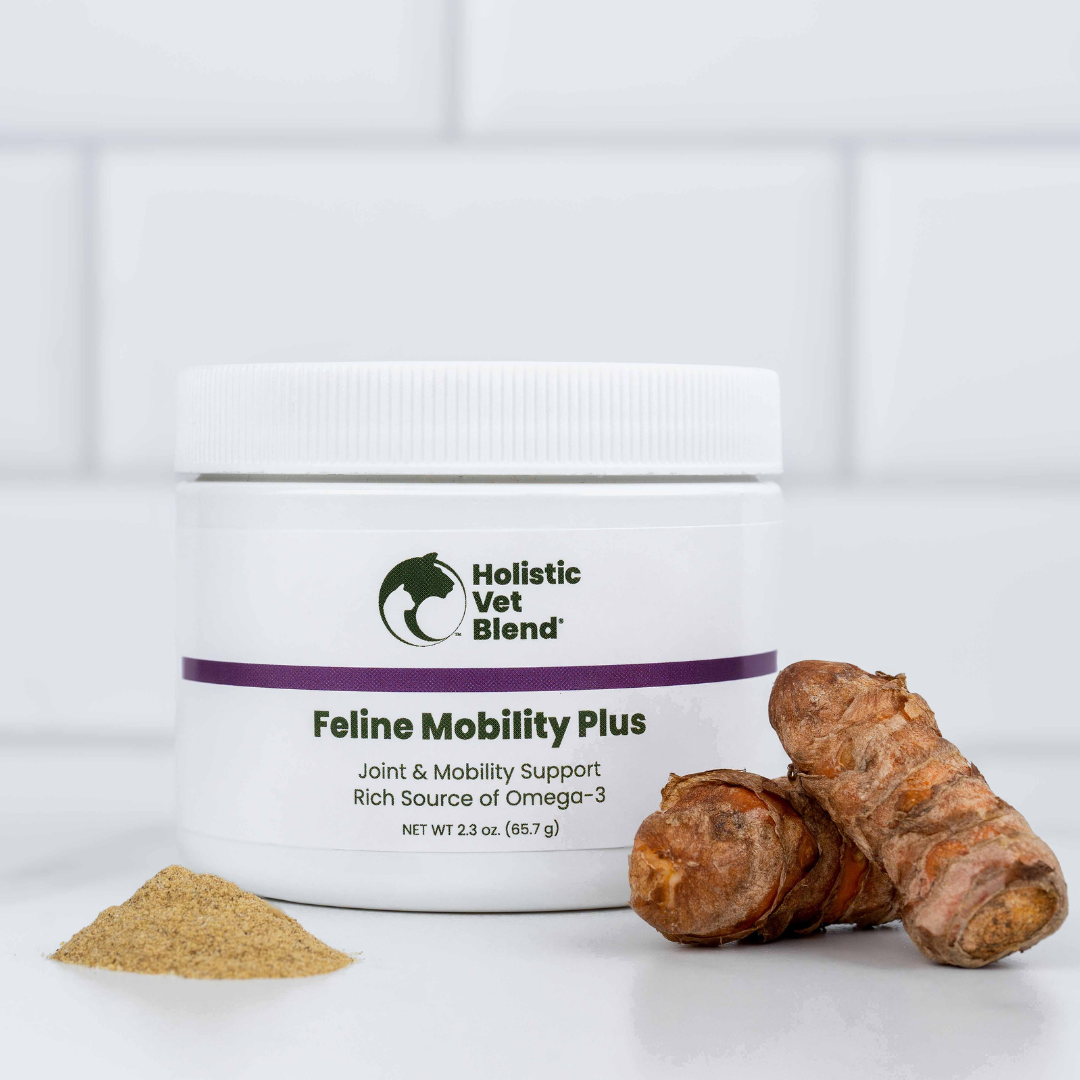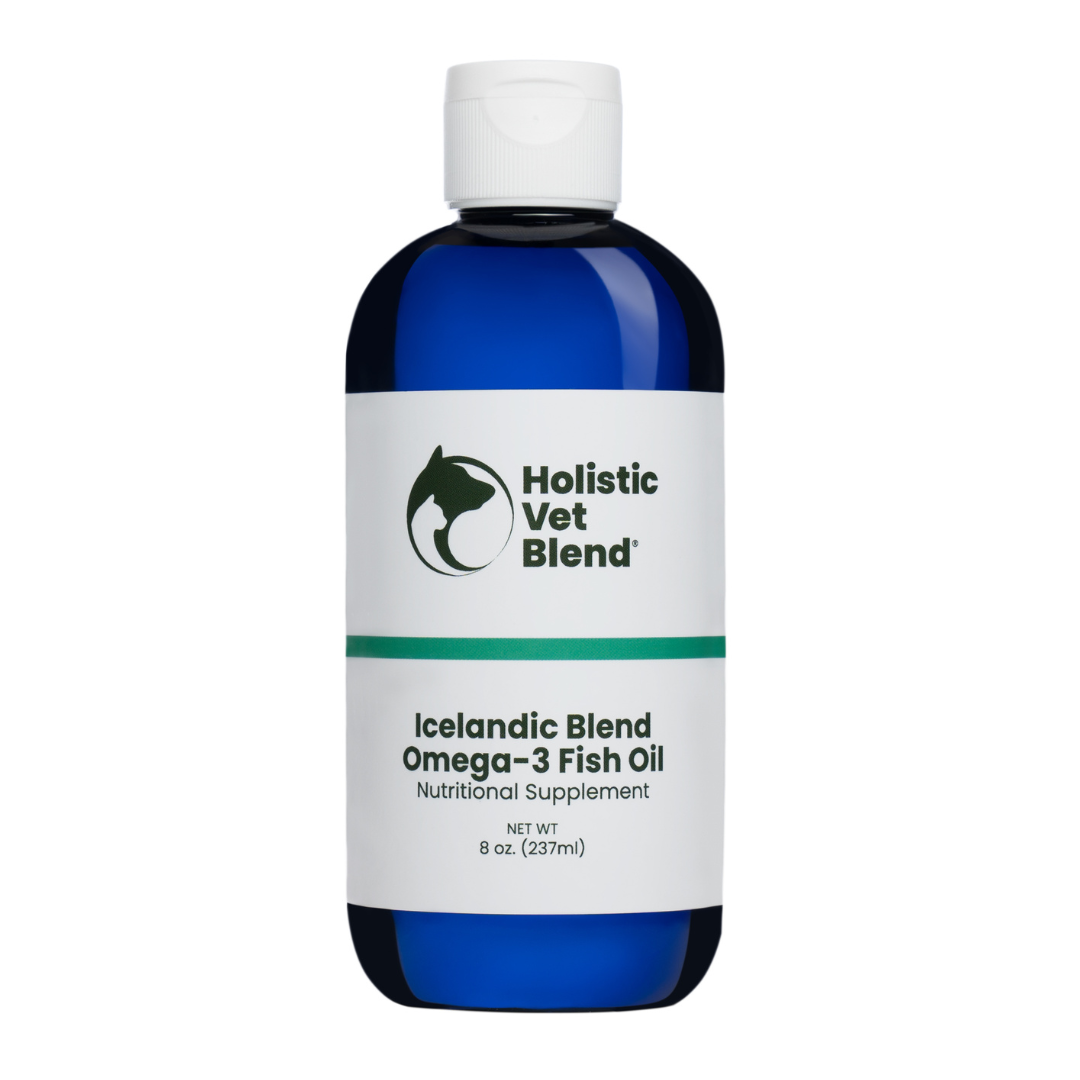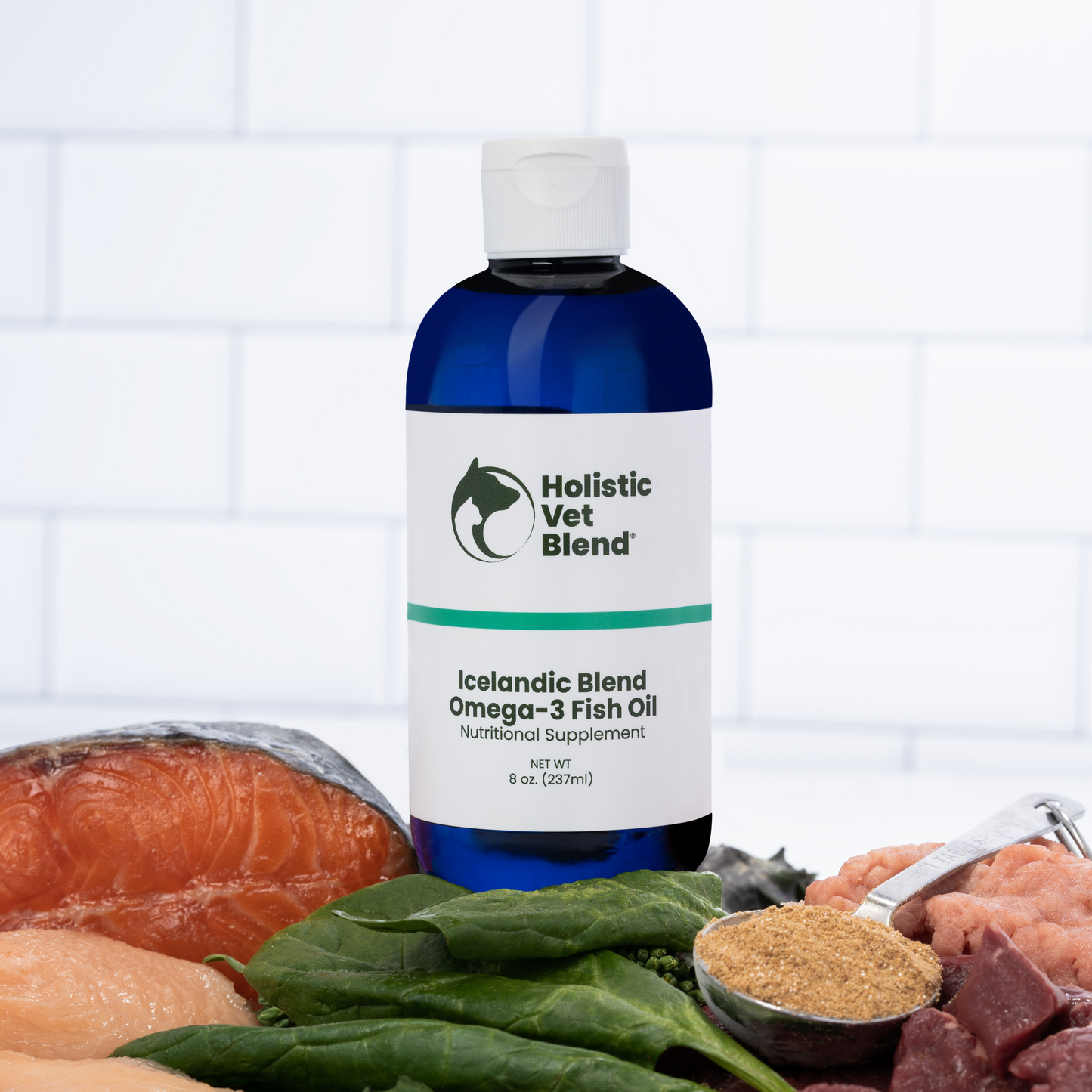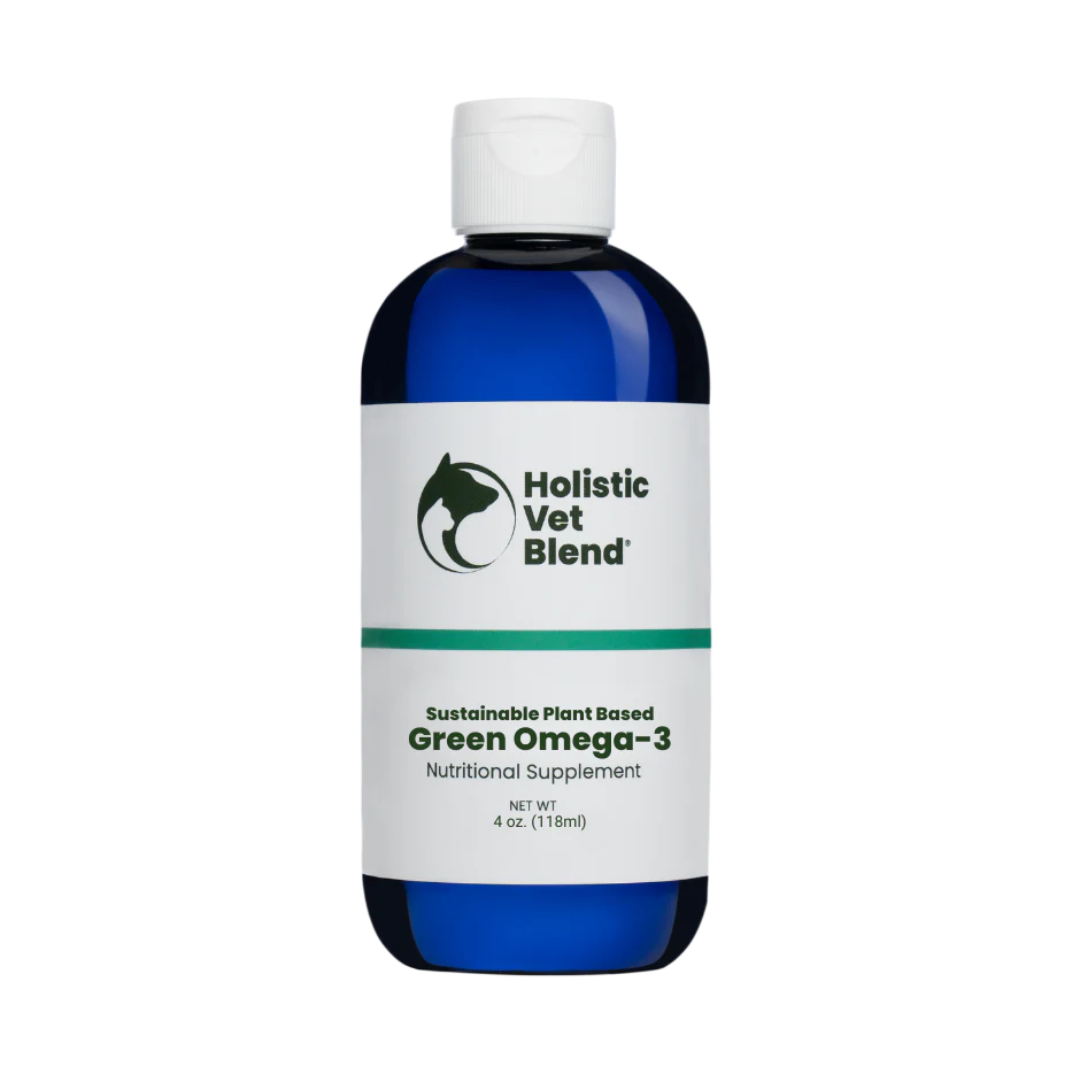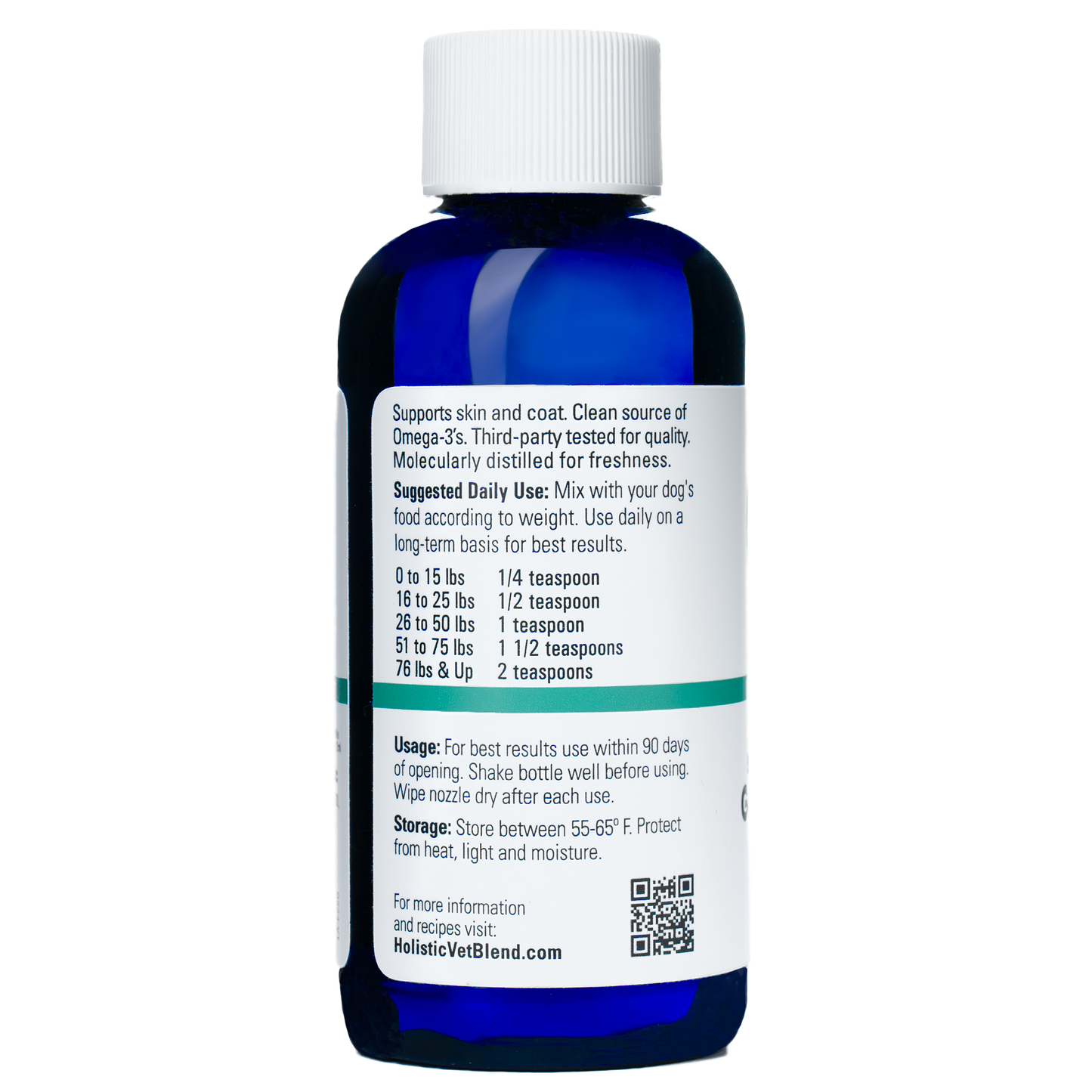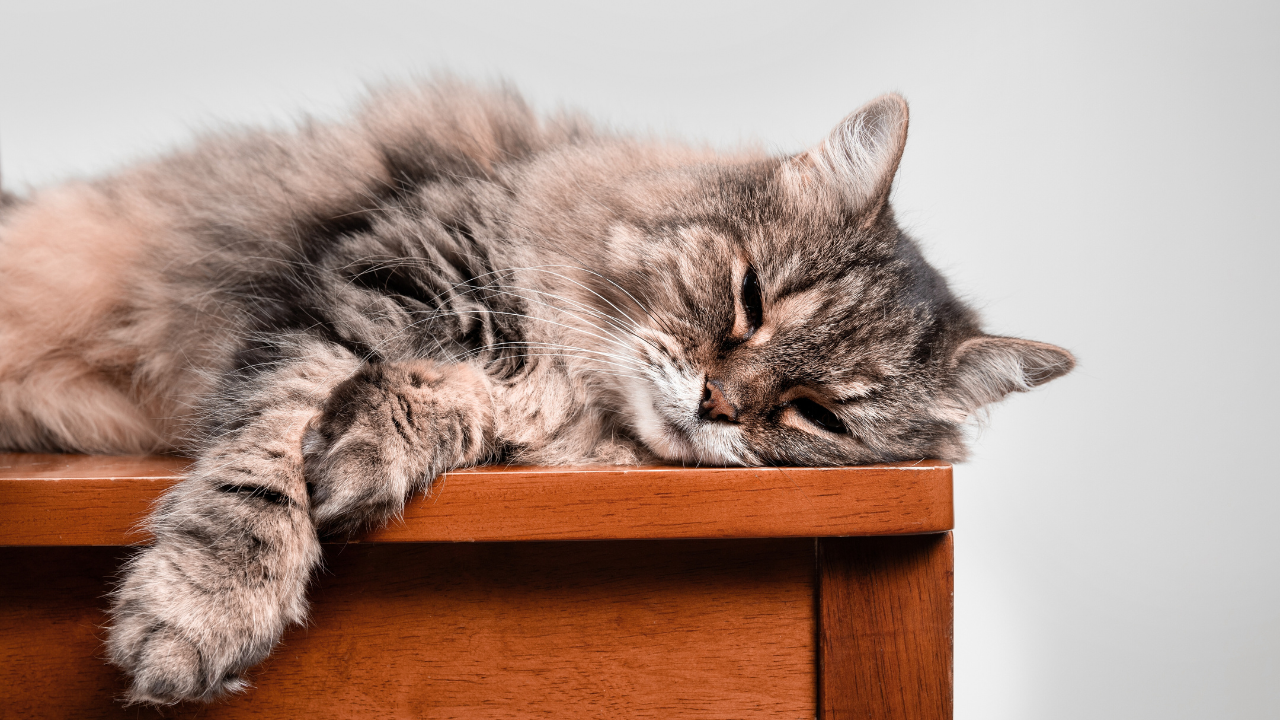
What are the key nutritional needs for a senior cat's diet?
As our cats grow older, their needs evolve, and nutrition is the most critical way we can help them thrive in their senior years. Old age itself isn’t a disease, but it does bring changes in metabolism, digestion, and body condition that require thoughtful care and attention. As a veterinarian (and cat mom) who feeds her pets like family, I want to empower you with trustworthy guidance on what to feed your mature and senior cats. My goal is to help you confidently nourish your senior feline friend for optimal health, longevity, and lots more purr-filled days together. Let’s dive in!
In this article, you’ll learn:
- Why senior cats still need protein—and lots of it. We’ll explain why cutting back can do more harm than good when it comes to your cat’s muscles, immune system, and energy.
- How nutrition can support cognitive health, joint comfort, and kidney function—and reduce the risk of common chronic conditions in older cats.
- The role of essential fatty acids, B vitamins, and antioxidants in healthy aging—and how a fresh or minimally processed diet can make a meaningful difference.
- While phosphorus is important for growth and metabolism, high levels in diets can tax aging kidneys
- What to look for in a senior diet, including digestible protein, essential fatty acids, antioxidants, and appropriate fiber
- How to transition from a growth or adult formula to a diet tailored for aging and longevity
- The value of combining conventional and holistic strategies for senior cat nutrition
- How to take a balanced, integrative approach that honors both holistic principles and evidence-based veterinary nutrition.
When Is a Cat Considered Mature or Senior?
Cats, like people, go through life stages, and the terminology can be a bit confusing. In veterinary guidelines, “mature adult” cats are typically in their 40s when early aging issues begin, and “senior” cats frequently start having early signs of chronic disease. Definitions vary slightly, but a general consensus (from organizations like the American Association of Feline Practitioners, AAFP, and the AAHA) is:
- Mature Adult: around 7–10 years old.
- Senior: over 10-14 years old.
- Super Senior or Geriatric: 15+
Some cats might be considered “senior” as early as ~8 years if they have age-related issues or genetic predispositions. And what about geriatric? The term geriatric is often used for the oldest cats – perhaps those 15+ years – but it isn’t strictly tied to a number. Geriatric generally implies a cat with more significant health challenges or frailty due to very advanced age. Every cat is an individual; one 12-year-old might still be spry and “middle-aged” in behavior, while another 12-year-old has multiple senior health issues. Age categories are just guidelines to help us anticipate needs. The key takeaway: By around 7 years, we start thinking of a cat as entering the mature stage (akin to middle age in humans), and after 10 years, we step up our senior wellness strategies.
Why does this matter?
Knowing your cat’s life stage helps you provide the right nutrition and care. For example, a mid-life (mature) cat might be prone to weight gain and dental issues, whereas an older senior might start losing weight or muscle and be at risk for kidney disease or hyperthyroidism. Proactively adjusting diet at each stage can make a big difference in their health. We’ll delve into those specifics, but first, let’s address one of the most significant misconceptions about senior cat nutrition: protein.
Busting the Low-Protein Myth: Senior Cats Need More Protein!
Have you heard the old advice that you should reduce your cat's protein intake as they age? This idea stemmed from concerns about aging kidneys, but for healthy senior cats, it’s actually a misconception that they need less protein. In fact, restricting protein in an older cat’s diet can do more harm than good if the cat doesn’t have a medical reason (like advanced kidney disease) to limit protein.
Cats are obligate carnivores, and protein is crucial for them at any age. As they get older, their bodies become less efficient at metabolizing protein, and they tend to lose lean muscle mass (a condition called sarcopenia). If their diet doesn’t provide enough quality protein, the body will start breaking down its own muscle tissue to compensate, leading to muscle wasting. You might notice an elderly cat looking bony along the spine or hips – that’s often muscle loss from aging or inadequate protein intake. In apparently healthy cats, about 30% of lean body mass can be lost between the ages of 10 and 15. We want to prevent that muscle loss because maintaining muscle is vital for mobility, immune function, and overall vitality in senior cats.
So, how much protein is “enough”? Research suggests older cats actually need more dietary protein than younger adults – perhaps up to 50% more – to maintain muscle mass. One expert consensus recommends that healthy mature/senior cats eat a diet with at least about 30–45% protein on a dry-matter basis (which is considered a moderate-to-high protein diet for a cat). The key is high-quality, highly digestible protein sources (animal proteins like poultry, beef, fish, etc.) so the cat can absorb those amino acids. Many senior diets utilize high-quality animal proteins and may even incorporate supplements like omega-3 fatty acids.
Bottom line: Unless your vet has specifically told you to restrict protein due to a condition (for example, certain stages of kidney disease), keep those proteins coming for your senior cat! High-protein diets do not “damage” healthy kidneys. Unfortunately, many conventional veterinarians recommend limiting protein too soon. More importantly, it's the phosphorus levels we need to pay attention to. It is well known that inadequate protein will accelerate muscle wasting in an older kitty. Limiting their protein will simply cause them to mobilize their muscle mass and experience muscle wasting.
Always choose good-quality proteins that are easy to digest – your gray-muzzled little carnivore still needs her meat. If you have any doubts, consult your veterinarian, but don’t arbitrarily put a healthy senior on a low-protein diet. We want to see strong legs and a nice top line on our golden-oldie cats, not a “skinny old kitty” look due to protein deficiency.
(If your cat does have chronic kidney disease, that’s a different scenario – we’ll discuss protein and phosphorus adjustments for kidney issues later on. But for a healthy senior, protein is your friend.)
How Nutritional Needs Shift with Age (Macronutrients & Micronutrients)
Aside from protein, what else changes in a cat’s nutritional requirements as they age? Let’s break it down by macronutrients (protein, fat, carbs) and micronutrients (vitamins, minerals), plus overall energy needs:
- Calories & Metabolism: Cats’ calorie needs can fluctuate with age. Many cats tend to gain weight in the 7–10 year range (middle age) as their activity slows slightly, so they may need fewer calories during those years to prevent obesity. However, after about age 11–12, cats often experience a swing in metabolism. It sounds counterintuitive, but senior cats commonly lose weight despite eating the same or even more. This can be due to reduced digestive efficiency, decreased nutrient absorption, or health issues such as hyperthyroidism. Each cat is unique: the key is to monitor body condition – if your older cat is getting too pudgy at 8, cut back a little; if she’s getting scrawny at 12, bump up those calories. Studies in healthy animals also show that maintaining a healthy weight (avoiding obesity) can slow age-related changes.
- Fat: Dietary fat is the most calorie-dense nutrient, and it’s a double-edged sword for older cats. On one hand, too much fat can contribute to weight gain in a less active mature cat. On the other hand, fat makes food tasty and provides essential fatty acids, and for a frail senior who’s losing weight, a higher-fat food can help pack more calories into each meal. The trick is to adjust fat content based on the individual cat’s needs. For an obesity-prone mature cat (say 8 or 9 years old and a bit chunky), a diet with moderate fat (about 10–15% fat dry matter) can help keep calories controlled. For a thin senior cat who needs to gain or maintain weight, a diet with higher fat (around 20% or even 25% fat dry matter) is beneficial. Fat is also crucial as a source of omega-3 and omega-6 fatty acids, which have anti-inflammatory effects and support the health of the skin, coat, and joints. Many senior diets include extra fish oil or other sources of omega-3s (DHA/EPA) due to their benefits for the aging body (we’ll discuss supplements further later). Keep in mind that older cats may have a harder time digesting fat.
- Carbohydrates & Fiber: Cats don’t have a specific dietary requirement for carbohydrates (being carnivores), but carbs often make up part of commercial diets, especially kibble. In senior cats, we primarily consider carbohydrates in the context of diseases such as diabetes and weight management. Lower-carbohydrate, higher-protein diets are generally recommended for all cats, not just those with obesity or diabetes. A senior cat with diabetes, for example, often does best on a high-protein canned food with minimal starch to improve blood sugar control. For healthy seniors, there’s no strict carb percentage to target – just be mindful that very high-carb diets (especially dry kibble heavy in grains) might predispose some cats to obesity or diabetes if they’re prone. Many “senior” cat foods actually increase fiber content. Why fiber? Fiber (which is technically a type of carbohydrate) can help with digestive regularity. Older cats frequently suffer from constipation (due to decreased gut motility, dehydration, or kidney issues). Beneficial fiber can hold water and help with hydration, while also promoting regular bowel movements.
- Water & Hydration: Water is critically important at all ages, but senior cats are especially prone to dehydration. Cats are desert creatures by ancestry and don’t naturally have a strong thirst drive, even when their body needs water. Aging blunts the thirst mechanism further. Many senior health problems – kidney disease, chronic dehydration, constipation, urinary tract issues – are tied to not getting enough water. So, one of the simplest things you can do is ensure your older cat drinks enough. Offer fresh water in multiple places, consider a fountain (cats often prefer moving water), and feed wet food or add water/broth to food. A hydrated cat has healthier kidneys and a lower risk of impaction from hard stool. You might notice an older cat’s skin “tents” more when you pinch it – that can be due to both mild dehydration and loss of skin elasticity with age. Wet food diets significantly boost water intake – a great reason many vets recommend canned food for senior cats (since canned food is ~70-80% water). Adequate hydration can help prevent or manage kidney disease and also keeps them feeling good (nobody likes being dried out).
-
Vitamins and Minerals: Older cats may have subtle changes in their ability to absorb or utilize certain vitamins and minerals:
- B Vitamins: Senior cats, especially those with digestive issues, often have trouble absorbing vitamin B12 (cobalamin). B12 deficiency can worsen appetite and energy levels. Your veterinarian may check B12 levels in older cats with weight loss or gastrointestinal problems and prescribe supplements or injections if necessary. Generally, a high-quality senior diet will be fortified with a sufficient amount of B vitamins. Water-soluble vitamins (like B12 and others in the B complex) can be lost in greater amounts if a cat has increased urine output (as in kidney disease). So, extra B vitamins in a renal diet or senior supplement can be beneficial.
- Antioxidants: Aging is essentially a process of accumulating cellular damage (often from oxidative stress). Antioxidant nutrients can help neutralize some of that damage.
- Minerals (Phosphorus, Sodium, etc.): These are big ones for senior cats. Phosphorus in particular is a mineral that needs attention as cats age. Once a cat is full-grown, their requirement for phosphorus goes down, and excessive phosphorus can be harmful to the kidneys. We will talk in depth about phosphorus in the next section (since it ties into kidney disease). In short, healthy older cats should not be eating high-phosphorus diets. Many commercial senior foods have slightly reduced phosphorus compared to all-life-stages foods, specifically to lighten the load on the kidneys and because high phosphorus intake has been linked to kidney damage over time.
As you can see, senior feline nutrition is a balancing act: we maintain high protein for muscle, tweak fat and carbs to control body condition, ensure plenty of water, and adjust certain minerals to protect aging organs. The good news is that many quality senior cat foods are formulated with these shifts in mind. However, there’s a lot of variation between brands – and not all “senior” labeled foods are actually ideal (there’s no strict regulation for what makes a food “senior”). It’s always wise to read the nutrient details or ask your veterinarian for recommendations based on your individual cat's needs.
To summarize the life stage differences and nutritional targets, here’s a handy table of cat life stages with approximate age ranges, diet composition goals, and common health issues that nutrition can help address:
Nutrition for Longevity
|
Life Stage |
Age Range |
Protein (DM%)* |
Phosphorus (DM%) |
Fat (DM%) |
Common Health Concerns |
|---|---|---|---|---|---|
|
Kitten (Growth) |
0–1 year |
~35–50% (very high) |
~0.8–1.5% (higher for growth) |
~20–25% (high) |
Rapid growth and development; immune challenges (infections, parasites) |
|
Adult (Young Adult) |
1–6 years |
~30–40% (high) |
~0.5–1.25% (moderate) |
~15–20% (moderate) |
Obesity (especially 5–6yr); dental disease can begin; urinary tract health |
|
Mature (Middle-Aged) |
7–10 years |
~30–45% (high, maintain muscle) |
~0.5–0.7% (moderate, avoid excess) |
~10–20% if overweight; up to ~25% if lean |
Weight management (tendency to gain weight); early chronic diseases (early CKD, early arthritis); diabetes risk (if obese) |
|
Senior |
11–14 years |
~40–50% (high quality, easily digestible) |
~0.5–0.6% (moderate, kidney-friendly) |
~15–25% (ensure enough calories) |
Weight loss and muscle wasting (sarcopenia); chronic kidney disease; hyperthyroidism; diabetes; arthritis; cognitive decline; heart disease; dental disease |
|
Geriatric |
15+ years |
~40–50% (high, plus extra amino acids) |
~0.3–0.6% (may restrict if CKD present) |
~20–30% (energy-dense, very palatable) |
Advanced CKD or renal insufficiency; severe arthritis/mobility issues; cognitive dysfunction (feline dementia); cancer; frailty and reduced appetite |
*DM% = percentage on a dry matter basis (i.e., nutrient percentage in the food when moisture is not considered). These are general target ranges for healthy cats at each life stage. Always adjust to your individual cat’s condition and check with your vet for specific recommendations.
As the table shows, geriatric cats (15+) often have nutritional needs resembling kittens in some ways – higher energy and protein requirements – because their bodies become less efficient, and they may be underweight. It has been observed that the oldest cats (>15 years) seem to require nutrient-dense, highly digestible diets, almost akin to a growth diet, to maintain their condition. So don’t be surprised if your super-senior grandcat is eating like a kitten again!
Next, let’s talk about how we can use nutrition proactively to manage or prevent common age-related diseases in cats, from fading memory to creaky joints.
Nutrition’s Role in Common Senior Cat Ailments
Good nutrition is preventive medicine. While diet alone can’t cure every ill, feeding the right food can help prevent or better manage many chronic diseases that tend to crop up in our cats’ golden years. Here are some common conditions in aging cats and how a tailored diet can make a difference:
- Cognitive Decline (Feline Dementia): If your senior cat is yowling at night, getting disoriented, or showing behavior changes, you might be seeing signs of feline cognitive dysfunction, akin to Alzheimer’s in pets. About 1 in 4 cats over 11 years shows at least one sign of cognitive decline not attributable to other medical causes. Nutritional science gives us some tools to help keep those aging brains sharp. Diets rich in antioxidants and omega-3 fatty acids (particularly DHA) have been shown to support cognitive function in older cats. Antioxidants (like vitamins E and C, selenium, etc.) help reduce oxidative damage in the brain, and omega-3s (from fish oil) are anti-inflammatory and support neuronal health. Some prescription diets for senior cats include special nutrient blends designed to support brain health. For example, combinations of fish oil, B vitamins, arginine, and antioxidants have been found to improve cognitive function in middle-aged and senior cats. You don’t necessarily need a prescription diet; you can also supplement these nutrients. Consider adding a fish oil supplement (ask your vet for a cat-specific dose) or choosing a senior formula that lists DHA/EPA. B vitamins (especially B12 and B6) are also often added for cognitive support.
- Obesity and Arthritis: I pair these two because they’re often two sides of the same coin. Middle-aged spread can turn into senior stiffness. Extra weight puts strain on joints and can accelerate arthritis. In turn, an arthritic cat may move less, burning fewer calories and gaining more weight – a vicious cycle. Nutritionally, preventing obesity is huge: keeping a cat at a healthy lean body weight can literally add years to their life and reduce the risk of many diseases. If your mature cat is a bit overweight, portion control and possibly a diet with controlled calories/fat can help them slim down before they hit senior status. (Your vet can help calculate how many calories Fluffy should eat per day; don’t just trust the pet food bag, which often overestimates.) For cats with arthritis, certain nutrients can help. Omega-3 fatty acids (EPA/DHA) from fish oil have natural anti-inflammatory effects and have been shown to improve joint mobility and comfort in arthritic pets. Joint supplements include fish oil, green lipped mussel, glucosamine, chondroitin, and MSM to support cartilage. In my practice, I often recommend a proactive approach of incorporating a joint supplement for any cat over 8-10 years, especially, it’s a 'why not, can help, won't hurt' situation. Weight management is the number one “treatment” for arthritis – even a small reduction in weight can noticeably improve a cat’s mobility and energy.
- Diabetes Mellitus: Senior cats commonly develop type II-like diabetes, often related to obesity and carbohydrate metabolism. If you have a chunky cat over 10, diabetes is a real risk. The good news: diet can sometimes reverse feline diabetes or put it into remission. The magic formula? A high-protein, low-carbohydrate diet (usually canned food) plus weight loss if needed. Cats are carnivores – their bodies aren’t designed to handle loads of carbs. By feeding a diet that’s mostly protein and fat, with very little starch, we can reduce the blood sugar spikes and take strain off the pancreas. Many diabetic cats that start on insulin can actually have the insulin therapy discontinued if their diet is changed and their blood sugars normalize. One study noted that a low-carb, high-protein canned diet helped improve glycemic control and increased the likelihood of diabetes remission in cats. For prevention, feed a meat-rich diet and keep your cat at a healthy weight. For management, work closely with your veterinarian, but recognize that nutrition is a cornerstone of treating feline diabetes. Also, ensure any weight loss is done gradually and safely – crash diets can cause hepatic lipidosis in obese cats. Slow, steady weight loss under veterinary supervision is the best approach.
- Chronic Kidney Disease (CKD): This is the big one in older cats – a leading cause of illness and death in senior felines. Nutrition plays a starring role in kidney care. The goals are to reduce waste products and metabolic burden on the kidneys, while still providing adequate nutrition to prevent muscle loss. The conventional approach (via therapeutic renal diets) is to feed restricted phosphorus and restricted protein, with high-quality protein sources. There is strong evidence that feeding a renal diet prolongs survival and improves quality of life in cats with CKD. Why? Primarily because of the phosphorus restriction (more on that in the next section), and also reduced protein to the extent necessary to minimize uremic toxins. If your cat is diagnosed with even early-stage CKD, your vet will likely recommend transitioning to a kidney-support diet. These diets typically contain approximately 0.3-0.6% phosphorus (DM) and protein at around 25-30% DM, along with additional omega-3s, fiber (for gut-mediated nitrogen excretion), and antioxidants. However, there’s some nuance: we don’t want to start a protein restriction too early or in a cat that’s frail, because then they lose muscle. Many specialists now emphasize phosphorus control as the most crucial factor, even more than protein. For a cat at risk of kidney issues but not diagnosed, the best approach is to feed a moderate protein diet and avoid excess phosphorus (for example, avoid a diet full of cheap fish meal with bone – those can be very high in phosphorus). If CKD is confirmed and in Stage 2 or higher, a prescription kidney diet is the gold standard. They truly can extend a cat’s life by slowing kidney deterioration. Some cats won’t eat the prescription food (they are often less palatable due to lower protein and salt). In that case, working with a veterinary nutritionist to formulate a palatable home-cooked kidney diet, or using phosphorus binders with a diet the cat will eat, are Plan B options. We’ll dive into phosphorus specifics shortly, but one more thing for kidneys: hydration! I can’t stress enough – senior cats, especially with kidney issues, should be encouraged to consume plenty of water. Adding water to food, offering broth, etc., can help keep those kidneys flushing. Also, kidney diets have controlled sodium (to prevent high blood pressure) and extra potassium because CKD cats often lose potassium and get muscle weakness. So, there’s a lot of fine tuning in nutrition for CKD. Think of it as buying time and comfort for your cat’s kidneys through what you feed. Many cats live years with well-managed kidney disease, and diet is a big reason why.
-
Hyperthyroidism: This is a hormonal condition very common in cats over ~8–10 years (peak incidence around 12–13). Hyperthyroid cats burn energy at an alarming rate – their thyroid gland is overproducing hormone and essentially driving their metabolism into overdrive. So what do we see? Weight loss, muscle wasting, ravenous appetite. Nutrition for a hyperthyroid cat has a few facets:
- While the hyperthyroidism is untreated or just being treated, you want to provide extra calories and protein to mitigate the weight loss. These cats are in a catabolic state; they break down muscle for energy despite eating tons of food. They can quickly develop protein malnutrition and muscle atrophy (you’ll see that along the spine/shoulders). A publication on hyperthyroid cat nutrition notes that these cats have an increased need for dietary protein because of the heightened protein catabolism. High-protein, high-energy diets (even kitten or “recovery” diets) may be useful during treatment. Essentially, you want to outpace the hyperthyroid burn with nutrient intake. If your hyperthyroid cat is losing weight, don’t restrict food – let them eat as much as they want, and make it count: nutrient- and calorie-dense options are best (like wet food with extra meat, etc.).
- Once the hyperthyroidism is treated (through medication, radioactive iodine, or surgery), often the cat’s appetite will normalize and weight stabilizes. One caution: some hyperthyroid cats have concurrent early kidney disease that was masked by the high blood flow from the hyperthyroidism. After treatment, kidney function might appear to worsen. So, nutritional management might shift in those cats to a more kidney-friendly diet. It’s a balancing act that your vet will help navigate.
- In summary, feed the hyperthyroid cat as much as they will eat of a nutritious, high-protein food until the condition is controlled. Post-treatment, adjust diet to maintain ideal weight. And ensure plenty of water since hyperthyroid cats often pee a lot and can get dehydrated.
- Heart Disease: Some older cats develop heart issues (like hypertrophic cardiomyopathy). There isn’t a specific “heart diet” for cats as there is for dogs, but general principles include moderating sodium (most senior diets already do that) and ensuring they get enough taurine (an amino acid essential for heart health – all cat diets should have it, and deficiency is rare except in unusual homemade diets). If a cat is on diuretics for heart failure, they might need extra potassium in the diet; many senior diets have slightly higher potassium anyway, but this is monitored via blood tests. Coenzyme Q10 is a supplement some holistic vets use for heart health, but evidence is mostly anecdotal. Overall, feeding a good balanced senior diet and preventing obesity are the main things for the heart.
- Dental Disease: By age 7+, a huge percentage of cats have dental tartar or gingivitis. By senior years, many have lost teeth or have painful periodontal disease or resorptive lesions. How does nutrition tie in? A sore-mouthed cat may not chew well or may avoid food, leading to weight loss. Feeding softer foods or adding water can help if chewing is painful. Crunchy dental diets can help scrub teeth in adult cats, but honestly by senior years if there’s significant dental disease, a vet dental cleaning and extractions of bad teeth will do more good than any food. After dental treatment, cats often eat better even if they have fewer teeth, because pain is relieved. So, adapt your feeding to your cat’s dental status: if they have few teeth or sore gums, choose paté or stew textures over hard kibble.
- Cancer: The risk of cancer increases as cats get into their teens. Nutrition for a cancer patient is a big topic on its own, but broadly, we aim to keep them eating and maintain their quality of life. Many cats with cancer experience cachexia – weight and muscle loss caused by the tumor’s effects on metabolism. They often need higher calorie and higher protein intake to combat this, plus feeding strategies to overcome nausea or appetite loss. Some evidence (mostly from dog studies) suggests that diets low in simple carbohydrates and higher in fat may slow certain tumors, since cancer cells often feed on glucose preferentially. This hasn’t been as well studied in cats, but given that cats are carnivores anyway, a low-carb diet is reasonable. Omega-3 fish oils have been shown to help with cancer-related cachexia in other species by modulating inflammatory pathways – it’s common to supplement omega-3s in pets with cancer. Antioxidants in moderation may support the immune system, though in some cases oncologists will advise against high-dose antioxidants during chemotherapy (the theory being they might protect cancer cells too). Every cancer case is unique, so involve your vet or a veterinary nutritionist. But if I were to generalize: feed whatever the cat will eat best (never let a cancer cat go into starvation, even if it means offering less “ideal” foods or lots of tasty treats), make it energy-dense and palatable, offer small frequent meals, and consider therapeutic diets like Hill’s a/d or Royal Canin Recovery (which are very high in fat/protein and appetizing). Also, treats are totally allowed – boiled chicken, bits of tuna, whatever wholesome people-food your cat fancies – as long as it doesn’t unbalance their overall diet too much. Hydration is also important, especially if the cat is undergoing treatments that can dehydrate them.
Whew, that’s a lot! The main thread in all these conditions is that diet can be adjusted to support the cat’s body and sometimes even slow disease progression (as in kidney disease or diabetes). Always work with your veterinarian to tailor a plan for your cat’s specific mix of issues – often senior cats have more than one condition (e.g. kidney disease and hyperthyroidism and arthritis at the same time). In those cases, we prioritize: for example, a cat with both CKD and hyperthyroid may need a compromise diet that has slightly more protein than a standard kidney diet (to offset muscle loss from hyperthyroid) but still controlled phosphorus for the kidneys. A lot of senior care is finding that balance, and it’s not one-size-fits-all. Regular check-ups (at least every 6 months for seniors) with bloodwork can guide dietary tweaks over time.
Now, let’s zoom in on that one nutrient I mentioned as a biggie for older cats: phosphorus. Controlling phosphorus is crucial for kidney health, but there’s ongoing debate about how early to start phosphorus restriction and how it relates to protein.
Phosphorus and Senior Cat Diet: Protecting Those Kidneys 🐟⚖️
Phosphorus (P) is a mineral found in high amounts in foods like meat, fish, bone, and dairy. Cats do require phosphorus – it’s vital for bones and cell function – but too much phosphorus can be harmful, especially to the kidneys. The kidneys are responsible for excreting excess phosphorus; as kidney function declines with age (even before clinical CKD), the body has more trouble keeping phosphorus in balance. High blood phosphorus can cause calcium to leach from bones and can trigger harmful hormone changes (like elevated parathyroid hormone and FGF-23) that further damage kidneys. In fact, studies show hyperphosphatemia (high phosphorus) is associated with faster progression of kidney disease in cats. Diets that restrict phosphorus significantly slow down kidney damage and improve survival in CKD cats.
But what about healthy senior cats – should we start cutting phosphorus as a preventive measure? Here’s what we know and current thinking:
- High phosphorus diets might cause kidney issues: Recent research suggests that feeding cats a diet excessively high in phosphorus (particularly high in inorganic phosphate additives) can induce kidney stress or damage even in healthy cats. In one study, cats fed a diet high in inorganic phosphorus (the kind added as preservatives/flavor in some cat foods) showed a reduction in kidney function over time. Diets with lots of added phosphates (like some low-quality kibbles or those with a lot of organ meat or bone) can have phosphorus levels far above what a cat needs. Some commercial foods (including some “adult” and “all life stage” formulas) are quite high in phosphorus, exceeding 4 or 5 grams per 1000 kcal, which in studies caused kidney changes. There is currently no AAFCO upper limit on phosphorus in cat food, so it’s up to manufacturers to self-regulate. Premium brands are starting to pay attention to this, especially for senior diets.
- Senior cats are the ones at risk: Since older cats are likely to develop CKD, many experts argue we should be mindful of phosphorus intake in cats as they enter their senior years. One recommendation (from veterinary nutritionists) for a healthy mature cat is to aim for phosphorus around 0.5–0.7% on a dry matter basis in the diet. (For reference, a typical adult maintenance diet might have 0.8-1.0% P DM; an all-life-stages kitten diet might have 1.2% or more.) By feeding moderate P levels, you avoid excessive intake that could be harmful. In senior-specific commercial diets, surveys found phosphorus content is often lower than in adult diets, but ranges widely. So again, check labels or ask the company. Look for brands that specifically mention “reduced phosphorus” for senior or kidney health.
- When to implement low-P diet: The generally agreed trigger to seriously restrict phosphorus (i.e., switch to a kidney prescription diet) is when a cat has confirmed CKD or at least some bloodwork changes indicating reduced kidney function. According to the IRIS guidelines, that’s typically at IRIS Stage 2 CKD (when creatinine is above normal range, >1.6 mg/dL, but not yet severe). There’s evidence that starting a renal diet at Stage 2 improves outcomes. For Stage 1 CKD (which is normal creatinine but some other markers off, or just early changes), it’s less clear – some vets will recommend a kidney diet early, others might hold off but at least moderate the phosphorus in whatever diet is fed. There is not full consensus on dietary recommendations for IRIS Stage 1, partly because diagnosing Stage 1 is tricky and because overly restrictive diets too early might have downsides (like nutritional deficiencies or muscle loss).
- Protein vs Phosphorus – finding balance: Historically, kidney diets were very low in protein, which inherently made them low in phosphorus (since phosphorus is abundant in high-protein ingredients). We now realize we want to restrict phosphorus more than protein. Modern renal diets try to use high-quality proteins in moderate amounts, and cut phosphorus by using low-P protein sources (like egg white, which is high in protein but low in phosphorus) and by avoiding ingredients like bone meal or fish bone that are phosphorus-heavy. Many commercial kidney diets for cats have 25-30% protein DM and 0.3-0.6% phosphorus DM – so protein is reduced some, but not to the point of frank malnutrition. If we restricted only phosphorus and not protein, that would be ideal, but because most phosphorus in a normal diet comes from proteins, it’s hard to decouple them completely. You can, however, have a diet that’s both high in protein and low in phosphorus if you carefully choose protein sources and possibly use phosphate binders. For example, a home-cooked diet based on egg whites and chicken thighs (meats trimmed of bone) can be high in protein but relatively kidney-friendly. This is something a veterinary nutritionist can help formulate if needed. The key point: a low-phosphorus diet is not automatically a low-protein diet, but many off-the-shelf renal diets do have somewhat lowered protein as a byproduct of phosphorus restriction. If your senior cat without CKD is eating a senior formula, check that it’s not unnecessarily protein-restricted – it should still be in that 30-45% protein range as discussed, and likely just has moderated phosphorus.
- Early phosphorus restriction – pros and cons: Some holistic or proactive vets advocate feeding a “kidney-friendly” diet to any cat over a certain age, before any kidney disease is diagnosed, as a preventive measure. This usually means a diet with controlled phosphorus (and maybe slightly reduced protein). The benefit could be that you might reduce kidney wear-and-tear and perhaps delay the onset of CKD. The risk is that if you restrict protein too much for a cat that doesn’t need it, you could cause malnutrition or muscle loss over time. The consensus seems to be: do not restrict protein/phosphorus in an aging cat unless there’s a medical necessity. However, “avoid excess” is prudent. So, I typically tell owners: once your cat is in the senior range, feed a high-protein diet with moderate phosphorus – basically an adult maintenance diet from a reputable brand that isn’t loaded with cheap fillers. Avoiding extremely high-P treats like lots of organ meat or raw bone is also wise. If bloodwork starts to show high-normal kidney values or rising SDMA (a kidney function biomarker), then I might suggest transitioning to a renal diet or at least a diet on the lower end of normal phosphorus. Every cat’s timeline is different. Some 15-year-old cats have perfectly fine kidneys and don’t need any restrictions; some 10-year-olds are already in early CKD and do. This is why regular senior blood panels and urinalysis are so valuable – they guide you on when to change the diet.
- Phosphorus targets: To put numbers on it: A healthy adult cat’s minimum requirement for phosphorus is around 0.3-0.5% DM. Many adult foods have ~0.8-1.0% DM. Senior or kidney diets aim for ~0.3-0.6% DM. So if your senior cat’s food is, say, 0.6-0.7% DM phosphorus, that’s decent for prevention. If the cat is early CKD, we’d want <0.5% DM ideally. One study suggested diets for senior cats should contain around 0.2-0.3 grams of phosphorus per MJ of energy to be protective – which roughly translates to that ~0.6% DM ballpark. The trickiest scenario is an older cat with normal kidneys but maybe borderline – some vets call this “geriatric nephropathy.” In those cases, gently reducing phosphorus might help without needing full protein restriction.
- Watch those phosphate additives: A notable tip for cat owners reading labels – ingredients like “phosphoric acid,” “dicalcium phosphate,” “trisodium phosphate,” etc. indicate added inorganic phosphates. These additives are very absorbable (bioavailable) and can drive up phosphorus levels in the blood. Diets heavy in fish (especially with bones) also tend to be high in phosphorus. If your cat is older, you might choose diets that don’t list a ton of phosphate additives high in the ingredient list.
To tie this together in plain terms: Phosphorus is the mineral we quietly keep an eye on as cats age. We don’t want it too high for too long. Once kidney disease is present, phosphorus becomes public enemy #1 – we actively restrict it, through diet and sometimes medications (phosphate binders that latch onto phosphorus in the gut). Phosphate binders (like aluminum hydroxide, calcium carbonate, etc.) are often used in CKD cats in addition to low-P food to get blood phosphorus down to target range. In a healthy senior without CKD, you shouldn’t need binders – just feed reasonably.
One more caveat: Too little phosphorus can also be a problem if fed inappropriately. Cats do need some. Diets with extreme phosphorus restriction (below ~0.3% DM) can risk issues like hypercalcemia or bone demineralization over the long term. For instance, one study found cats with early CKD developed high calcium levels when on a very low P diet (<0.3%). So we target a safe low range, not zero. Balance, as always.
In conclusion, for phosphorus: Don’t fear it, but do respect it. If your cat is older than 7 or 8, start avoiding unnecessarily high-phosphorus foods (like kitten chow or certain all-life-stage diets full of fish meal). Once your cat is >10, make sure the diet is senior-appropriate in phosphorus content. And if CKD rears its head, pivot to serious phosphorus restriction to give those kidneys a fighting chance. Always involve your vet in these decisions; they may run blood phosphorus levels and adjust the plan accordingly.
Now that we’ve covered nutrients in detail, let’s discuss the types of diets you might feed your senior cat – specifically, the differences between commercial “senior” cat foods and home-prepared diets. There are pros and cons to each approach, and it often comes down to what works for you and your kitty.
Commercial Senior Diets vs. Home-Prepared Diets: Finding the Right Fit
Walk into any pet store and you’ll see shelves of foods labeled “Senior 7+” or “Healthy Mature Cat” or the like. At the same time, you might be curious about cooking for your cat at home or even trying a raw diet for a more “natural” approach. Let’s compare these options on a few key points: nutrient content, bioavailability, ingredient quality, and customization.
1. Nutrient Density & Completeness:
Commercial senior diets are formulated to be complete and balanced according to AAFCO adult maintenance standards (remember, there’s no separate AAFCO senior profile). This means they should meet minimum requirements for all nutrients. Senior foods vary widely though – a study of 31 senior cat diets found that, apart from often having more fiber, their calorie and nutrient content was all over the map, often similar to adult foods. Some senior kibble is actually low in protein (not ideal), whereas others are high-protein. So, you can’t assume a food is good for your cat just because it says “senior.” However, reputable brands often tweak their senior formulas to have lower calories, slightly lower fat, moderate protein, and restricted phosphorus and sodium.
2. Bioavailability:
Bioavailability refers to the ease with which nutrients can be absorbed and utilized by the body. Fresh animal proteins in a home-prepared diet are often highly digestible and bioavailable – after all, this is what cats evolved to eat. For example, fresh meat protein typically has digestibility in the mid-90% range. Many commercial foods are also highly digestible, especially premium wet foods; however, ultra-processed ingredients or excessive plant protein can reduce digestibility. Some kibble has grain or legume proteins that aren’t utilized as efficiently by obligate carnivores. Home cooking allows you to avoid fillers and poor-quality ingredients. Lightly cooked or raw diets often retain more of certain nutrients in a natural state, which can be beneficial – e.g. the natural form of vitamin A in liver is very bioavailable, taurine in raw meat is intact (though raw feeding has its own risks with pathogens and the risk of bird flu). Also, moisture content plays a role – a hydrated food (canned or fresh) is generally easier to digest than dry kibble. In practice, many owners report that their senior cats seem to do well on home-cooked diets – coats get shinier, stool quality is good, etc. This could be due to higher bioavailability and absence of unnecessary fillers. But if the home diet is not properly balanced, those short-term signs can mask long-term deficiencies. For example, a cat might look great on your chicken-and-fish homemade diet for a year, but slowly develop a calcium or zinc deficiency that isn’t obvious until it’s serious. So bioavailability is a double-edged sword – you absorb what’s there, but if something’s missing, that’s trouble. Summary: Home diets can offer highly bioavailable nutrition, but ensure all required nutrients are present in the recipe. Commercial diets ensure all essential nutrients are present (by regulation) – though in forms that might be a bit less natural (e.g., synthetic vitamins, which are fine, but some holistic folks prefer food-based vitamins).
3. Ingredient Quality:
Quality can vary widely in both commercial and homemade. Commercial diets: A premium brand will use high-grade ingredients (often labeled as “human-grade” or sourced from USDA-inspected facilities, etc.) – muscle meats, fish filets, whole grains, etc. Lower-end brands might use more by-products, meat meals, and rendered fats. It’s worth noting, “by-products” in cat food aren’t necessarily bad – cats in the wild eat by-products (organs) and those are quite nutritious. But extremely cheap foods could have more fillers and artificial additives. By law, pet foods must be safe and the ingredients have to be deemed fit for animal consumption, but not all are what you would personally eat. Home-prepared: You can personally select each ingredient. You can use free-range chicken breast, wild-caught salmon, and organic vegetables, among other options. This level of control is appealing to many pet parents. If your cat has a food allergy, a homemade diet allows you to avoid the offending ingredient completely, with no risk of cross-contamination. You can also ensure a higher palatability by using fresher, tastier ingredients. And you know exactly what’s in the bowl – no mystery meats or surprises. The flip side is cost and sourcing – high-quality ingredients can be expensive, and preparation is time-consuming. Additionally, for raw diets, quality control is crucial (pathogen contamination in raw meat can harm your cat or you). Commercial raw foods sometimes undergo high-pressure pasteurization to reduce this risk, whereas homemade raw diets require meticulous handling. If using raw meaty bones in a diet, you have to be aware of the source to avoid bacterial issues and ensure they’re safe (not too hard to cause tooth fractures, etc.). Many holistic veterinarians who advocate for raw/home feeding will emphasize the use of human-grade meats and even lightly cooking to kill surface bacteria, if not feeding fully raw.
In summary, commercial senior diets offer a tested nutritional balance and ease of use, but the quality and formulation vary by brand – choose one that aligns with your cat’s needs (many options emphasize high protein and senior wellness). Home-prepared diets offer ultimate control and potentially high-quality nutrition tailored to your cat, but they require diligence to ensure nutritional completeness and food safety. Some pet parents do a hybrid – e.g. feed a high-quality commercial diet as the base, and supplement with home-cooked toppers or occasional fresh meals for variety and added nutrition. There’s no one “right” way; the best diet is one that your cat thrives on and that you can manage consistently.
If you’re considering a big diet change for your senior cat (whether switching brands or going home-made), remember to transition slowly. Older cats can be stuck in their ways with food preferences. Gradually mix new food in and allow 1-2 weeks or more for a full change to avoid digestive upset and give your cat time to accept the new texture or taste. Patience is key – and sometimes persistence, too, because cats can be neophobic (suspicious of new foods). Warming food, adding a little tuna water, or hand-feeding can encourage a stubborn senior to try a new diet. It’s worth the effort when the diet is for their health (e.g. a kidney diet). Involving your veterinary team can help – vet nurses often have creative tips for transitioning finicky felines onto therapeutic foods.
Finally, monitor and adapt. Integrative care is all about paying attention to the whole cat. If you notice new signs (drinking more, eating less, vomiting, etc.), adjust the plan or seek veterinary advice early. Nutritional needs can change even month to month for a senior cat depending on their health status. So be flexible and keep learning – which you’re already doing by reading a long blog post like this!
Conclusion: Feeding with Love and Science
Caring for a senior cat is a journey – one that blends the heart and the mind. We use science-based nutrition to guide us on protein levels, phosphorus control, and balanced vitamins/minerals, and we use our compassion and intuition to cater to our cat’s individual personality and preferences. By staying informed (e.g., following veterinary consensus guidelines) and being observant of your cat’s changing needs, you can make their later years truly golden.

